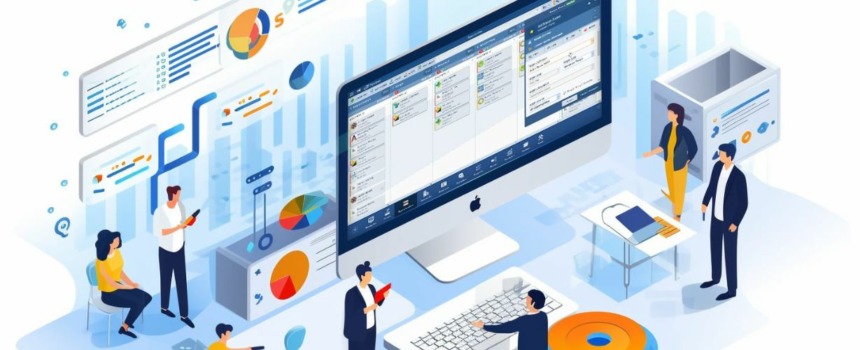Today and into the future, it is vitally important that CRM should not be isolated from other systems, but as fully integrated with them as possible.
Why is this? Today, data must flow seamlessly from one end of the company to the other. It should be like a river that never runs in separate steps but flows freely.
What’s In That Data Flow?
The data included in that flow is the most crucial for your company: core data about every customer—what they’re buying, what they’ve purchased in the past, core data about every interaction, request, and perhaps support tickets.
The “Total Suite”
It is evident then that a 360-degree view is necessary for the future. That is why some vendors become tempted to offer a “total suite” for nearly everything. There are open-source tools available in the CRM space for every function, with a module for each. Some larger vendors have a suite approach for a company’s main functions—something we do not do because we know our product is not an ERP, marketing automation, or a ticketing system.
One vendor, Zoho, offers a complete suite such as this. When you subscribe to Zoho.com, you have a CRM, bookings, forms, financing, human resources, legal, security and much more. It seems that you could run the whole company on Zoho, but no one actually does that.
No vendor can be everything to everyone. It should set out and succeed at dealing with a single major issue, and do so extremely well.
Applications in Total Communication
On the other hand, though, all of a company’s systems must be in communication with each other. In our last article, we discussed the fact that there are many tools to enable such communication, from connectors to APIs and middleware.
But let’s put aside the technical issues for the moment and focus on how important it is to the business that all systems are in communication. Each of these systems should be integrated, step by step, into your CRM system. If this is not the case, you can never obtain reports on the data flow throughout your company, and you have no real overview. All the various systems, then, act as silos.
Nearly all medium to large companies have an ERP system, which should always be integrated into CRM. As we discussed in our last article, at least enable ERP data to flow into and be viewed from, CRM, if you are not ready to share data bidirectionally.
For example, you should know which products and services a customer has bought. What have they paid for? Which invoices are still open? Are there products and services that could be offered based on their previous purchases?
CRM must be integrated so the ship can be steered in the right direction.
Some companies import data from all their systems into a BI tool and make decisions from that. This is also an inefficient way to go and is costly in terms of time and money. It is much more efficient to integrate CRM.
A Complex Undertaking?
In the old days, integration could be very complex. This is no longer the case.
You don’t need to begin by defining every single system relationship. Start simply and proceed in iterations based on requests from your team. By building system relationships with CRM, you can then easily report on all the main functions of your company.
Often, the primary stalling point for CRM integration is making it a management priority. Management must make that decision and guide the company through it.
Start from the top and the beginning. And make it happen!
…But Just Do It
As long as you’re not moving in the direction of integrating with CRM, the use, the benefit, and the beauty of CRM will never exist for you. The CRM should be your company’s core, its operating system, much like an operating system is the core of a computer system. It should be the hub that connects all of your departments and systems.
In the case of Pipeliner CRM, we have provided a good amount of integration right up front, out of the box. We have built-in integrations with Office 365 and G Suite for efficient and effective communication with your customers. We integrate with ZenDesk, giving you a “best-of-breed” ticketing system. We have built-in integrations for many more.
You then need to integrate CRM with your legacy and ERP systems so you have the full view of your customers.
Why is this integration so vital? Without a total relationship with your customers—customer relationship management—you have no company. The customer pays for everything: your rent or property tax, electricity, product or service product, and storage.
This integration provides you with the 360-degree view that you need. It offers sharp focus, bringing efficiency, productivity, and profitability.
Today, it’s easy, and for Pipeliner CRM, we’re here to help you take the proper first steps, your first iteration.
It’s all a matter of willingness to make CRM the core system of your company. You’ll understand and begin executing in the right direction at that moment.





















Comments